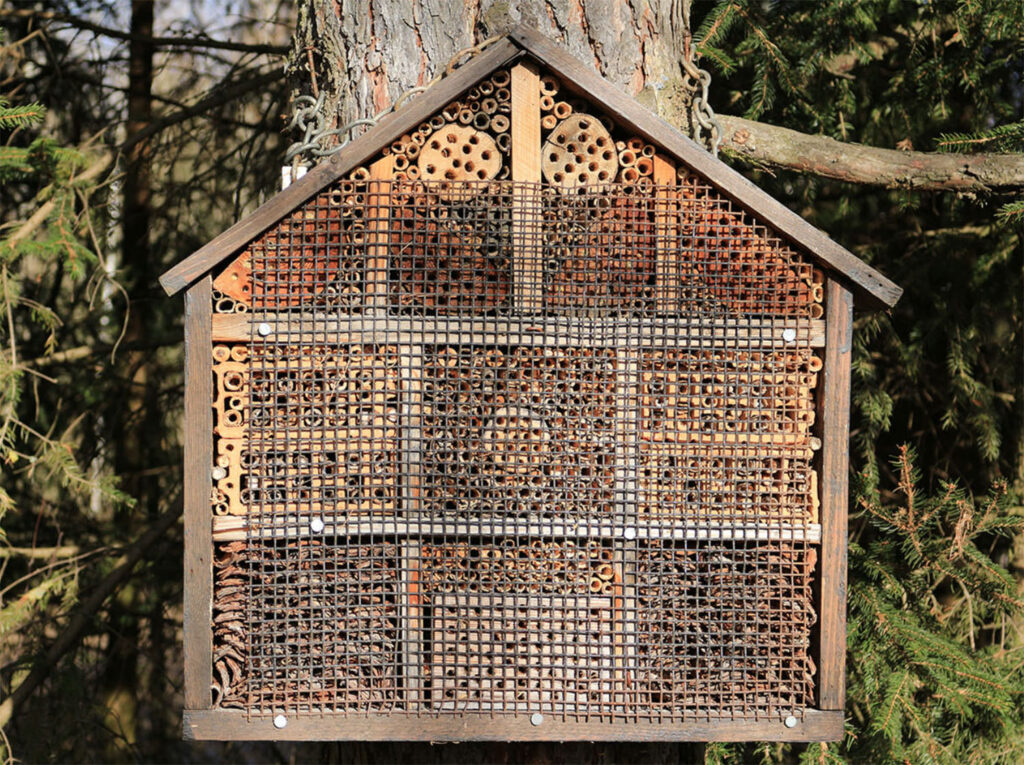By Alliance Communications Coordinator Amy Durr
While some fear bees, World Bee Day celebrates the critical ecological role these amazing pollinators play with their taste for nectar and fuzzy legs, according to Heifer International. It’s estimated that one-third of global food production requires animal pollination and 80-90% of this role is carried out by honeybees. According to the USDA, “bees feed 80% of the crops that we eat including broccoli, apples, asparagus, blueberries and coffee.” They also pollinate alfalfa, a grass that feeds beef and dairy cows. Here are 8 ways you can help pollinators every day:
1. Just say no to pesticides and herbicides
Pesticides and herbicides contain chemicals that are very harmful to bees and other beneficial insects. Avoid chemical sprays on your plants and yard. Do some research and try some natural, bee-friendly alternatives. Even an herbicide or pesticide that labels itself as “organic” could still be a hazard. So, put down that bottle of Round Up and try some natural alternatives (and use them as sparingly as possible). And don’t forget the soil! You can build up the dirt in your garden, clear weeds and attract the beneficial worms with something you probably have in your garage: cardboard boxes.
2. Let your lawn get back to its roots
Put down the weed-eater! Bees prefer something similar to their natural habitat—a meadow. Think about letting a portion of your yard go back to its roots. Allow dandelions and clover to grow again (two of bees’ favorite delicacies). Not only will you spend less time mowing your lawn, the bees will thank you for it.
3. Keep a bee garden
One of the largest threats to bees is a lack of safe habitat where they can build homes and find a variety of nutritious food sources. By planting a bee garden, you can create a safe haven for bees with pollen- and nectar-rich flowers by planting a range of shapes, sizes, colors, and bloom times. You don’t need a ton of space to grow bee-friendly plants — gardens can be established across yards and in window boxes, flower pots, and mixed into vegetable gardens. Seek out locally native plants as often as possible as many bee species have coevolved to feed exclusively on native flowers and need them to survive.
4. Shop responsibly
Supporting your local growers and supporting bees go hand in hand. When you can, buy your fruits and vegetables (and honey) from local farmers through a CSA (community supported agriculture) box or from local farmers markets. The more you can support sustainable, earth-friendly agriculture the better, but if you don’t have access, eating organic goes a long way to help the bees!
5. Create a bee bath
Bees work up quite a thirst foraging and collecting nectar. Fill a shallow bird bath or bowl with clean water, and arrange pebbles and stones inside so that they break the water’s surface. Bees will land on the stones and pebbles to take a long, refreshing drink.
6. Protect ground-nesting bees
Did you know that 70% of the world’s 20,000 bees (including bumblebees) live underground? There, they build nests and house their young, who overwinter and emerge each spring. Ground nesting bees need bare, mulch-free, well-drained, protected soil in a sunny area to create and access their nests. Leave an untouched section for ground nesting bees in your garden!
7. Build a bee box or leave stems behind
Different types of bees need different types of habitats to survive. Some bees nest in wood or mud, while others make their homes on the ground. Check out the USFWS’s Pollinator Pages to learn more about how to build a simple bee box for the pollinators in your neighborhood.
30% of bees live in holes inside of trees, logs, or hollow plant stems. Don’t cut those hollow stems, which are valuable bee habitats. A hollow stem may not seem like prime real estate to us, but to mason and other bees, it’s a cozy home in which they may overwinter. Wait until the spring to cut back dead flower stalks, leaving stems 8 to 24 inches high to provide homes for cavity-nesting bees.
8. Provide trees for bees
Did you know that bees get most of their nectar from trees? When a tree blooms, it provides hundreds (if not thousands) of blossoms to feed from, The Bee Conservancy shares. Trees are not only a great food source for bees, but also an essential habitat. Tree leaves and resin provide nesting material for bees, while natural wood cavities make excellent shelters. Native trees such as maples, redbuds, and black cherry all attract and support bees. You can help bolster bee food sources and habitat by caring for and planting trees. Trees are also great at sequestering carbon, managing our watersheds, and cooling air temperatures.

